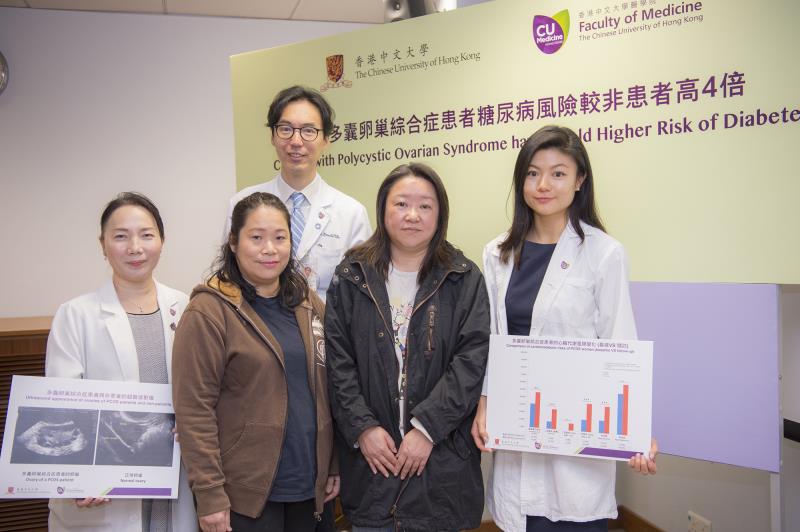
Chinese women with polycystic ovary syndrome (PCOS) have a significantly increased risk of type 2 diabetes mellitus (T2DM) compared with those without PCOS and the general female population, a large long-term follow-up study led by researchers from the Chinese University of Hong Kong (CUHK) has shown.
“Although PCOS is traditionally viewed as a reproductive disorder, an increasing amount of research findings shows that it is associated with a significantly increased risk of cardiometabolic disorders. Patients thus have a higher risk of developing diabetes and cardiovascular disease in the long run,” said Dr Lai-Ping Cheung from the Department of Obstetrics and Gynaecology, CUHK.
In this case-control study, researchers enrolled 199 Chinese premenopausal women with PCOS (mean age, 41.2 years) from the Prince of Wales Hospital PCOS Registry and 225 Chinese premenopausal women without PCOS (mean age, 54.1 years) from a community-based study of cardiometabolic risk factors. The participants were followed up over an average of 10.6 years, with progression of glycaemic status analyzed based on standard 75 g oral glucose tolerance test (OGTT) as well as clinical, anthropometrical and biochemical assessments. [PLoS Med 2019, doi: 10.1371/journal.pmed.1002953]
During the follow-up period, the diagnosis of PCOS was associated with a 5.77-fold increase in risk of developing incident T2DM (95 percent confidence interval [CI], 2.38 to 13.97; p<0.001) after adjustment of covariates. Women with PCOS had overall worsening of cardiometabolic status, including impaired glucose regulation (mean change from baseline to follow-up, 15.5 percent), T2DM (mean change, 16.6 percent), hypertension (mean change, 18.6 percent), and dyslipidaemia (mean change, 12 percent). In addition, the age of onset of T2DM was significantly younger in women with PCOS than in those without PCOS (mean age, 37.6 years vs 47.9 years; p<0.001).
Compared with women without PCOS and the general female population, women with PCOS had the highest age-standardized incidence rate of T2DM (22.12 per 1,000 person-years vs 10.09 and 8.76 per 1,000 person-years, respectively).
In particular, the T2DM incidence rate for women with PCOS aged 30–39 years was 20.56 per 1,000 person-years, a 3-fold and 10-fold increase compared with rates in age-matched women without PCOS (6.81 per 1,000 person-years) the and general female population in Hong Kong (1.88 per 1,000 person-years), respectively.
The cumulative incidence of T2DM in women with PCOS was 2.5 times higher than those without PCOS who have no family history of T2DM (26.1 percent vs 10.6 percent; p<0.05), but was not significantly different compared with women without PCOS who have a positive family history of T2DM (26.1 percent vs 25 percent; p>0.05).
Among women with PCOS, the incidence of T2DM was doubled in those who were overweight (BMI ≥23 kg/m2) (28.64 per 1,000 person-years vs 8.96 per 1,000 person-years), and progression to T2DM was associated with increased waist-to-hip ratio (odds ratio [OR], 1.71; 95 percent CI, 1.08 to 2.69; p<0.05) and elevated triglyceride (OR, 6.63; 95 percent CI, 1.23 to 35.69; p<0.05].
“Our data provide useful guidance towards formulating metabolic screening recommendations, and highlight the need for developing a multidisciplinary approach to the management of these high-risk patients,” concluded the researchers.